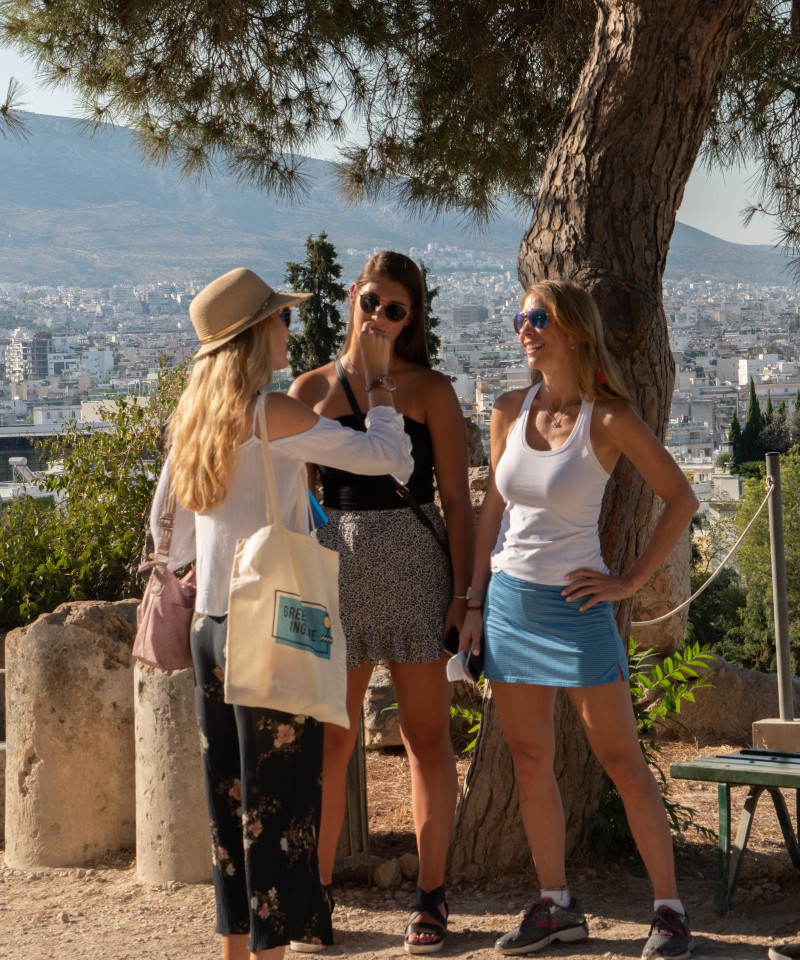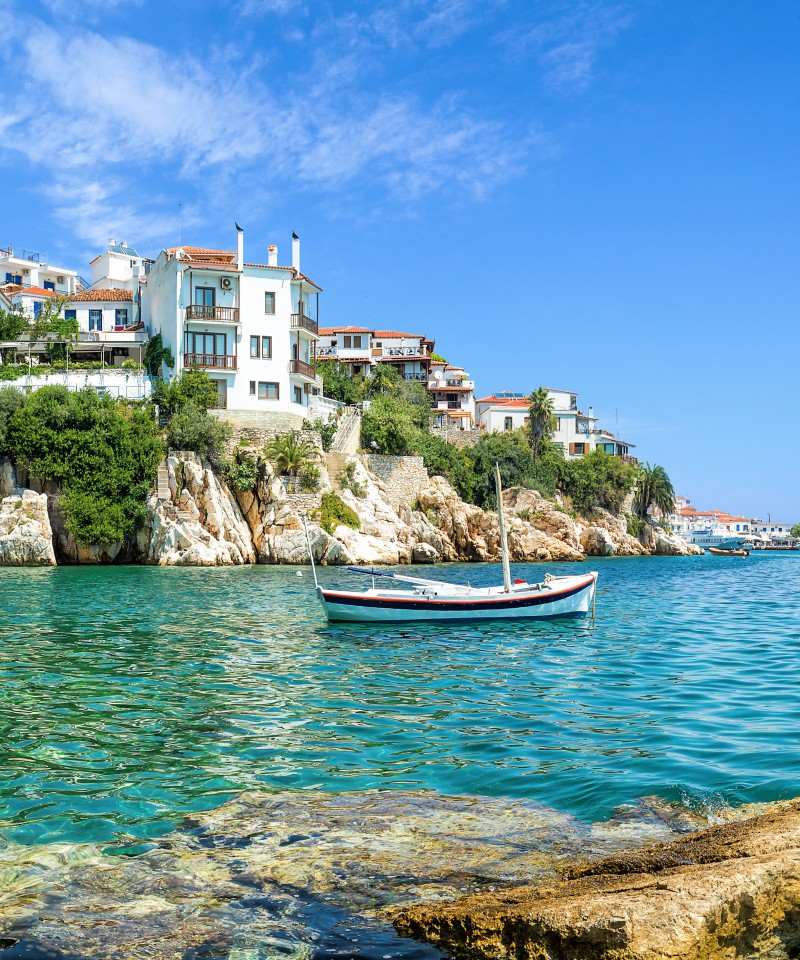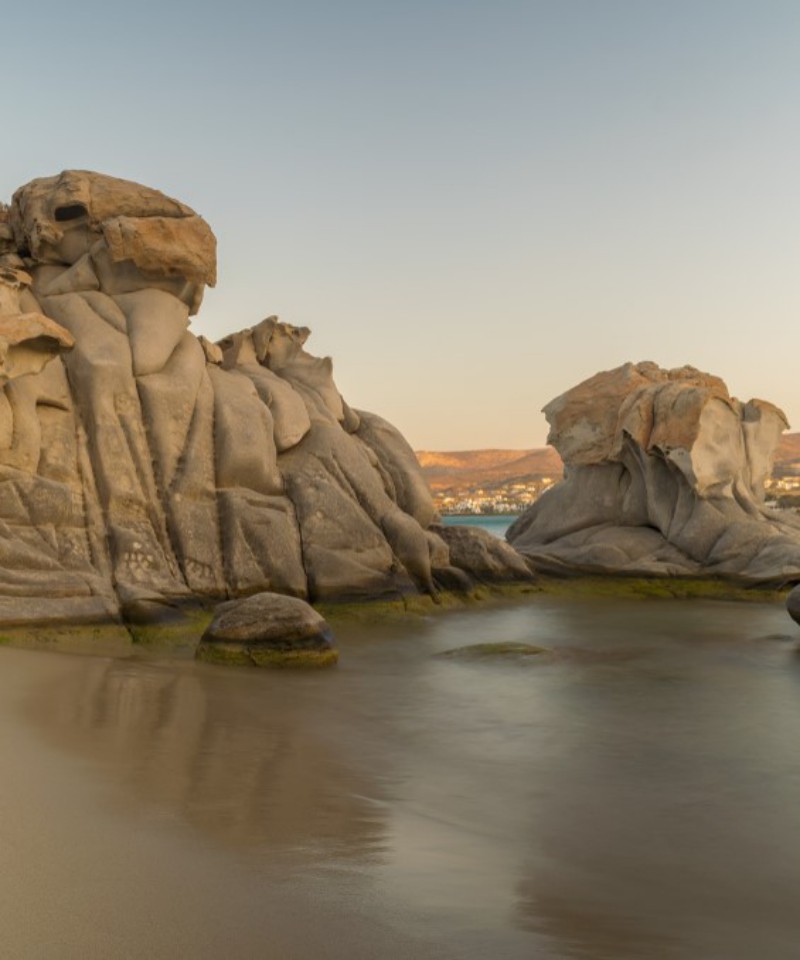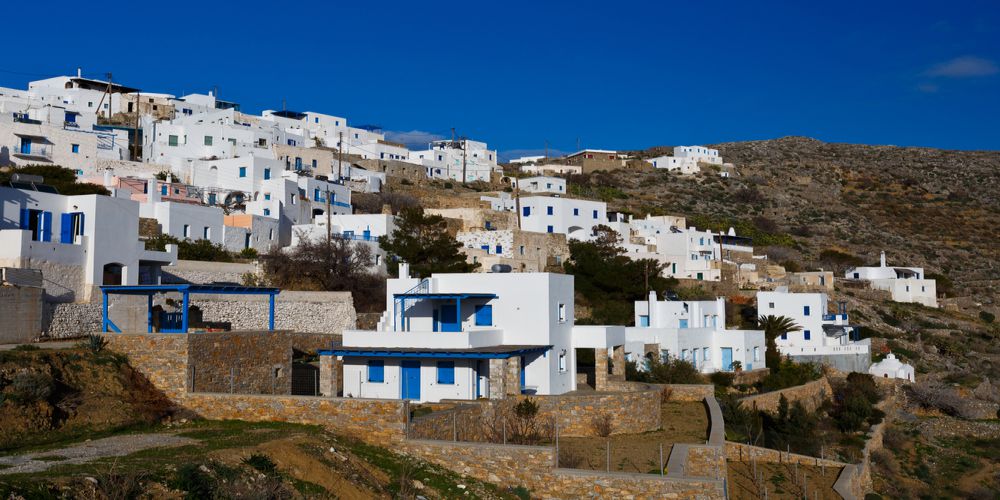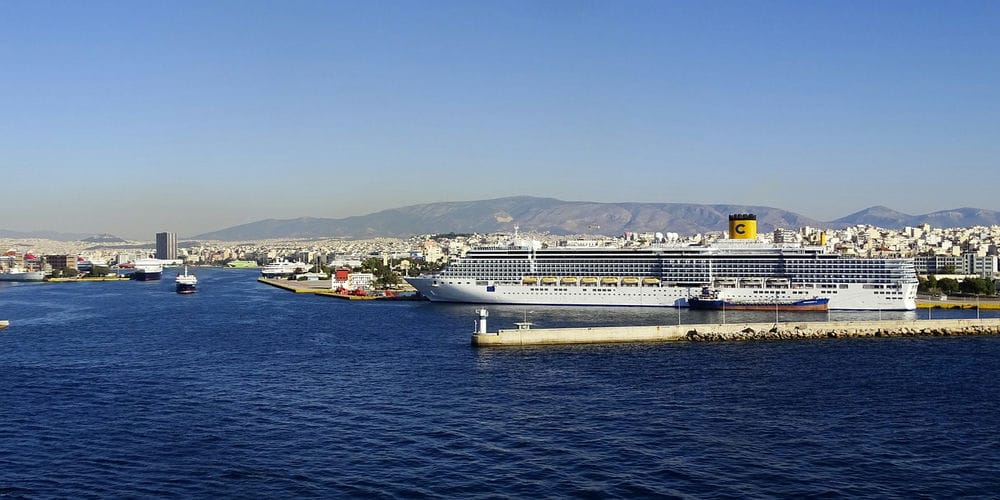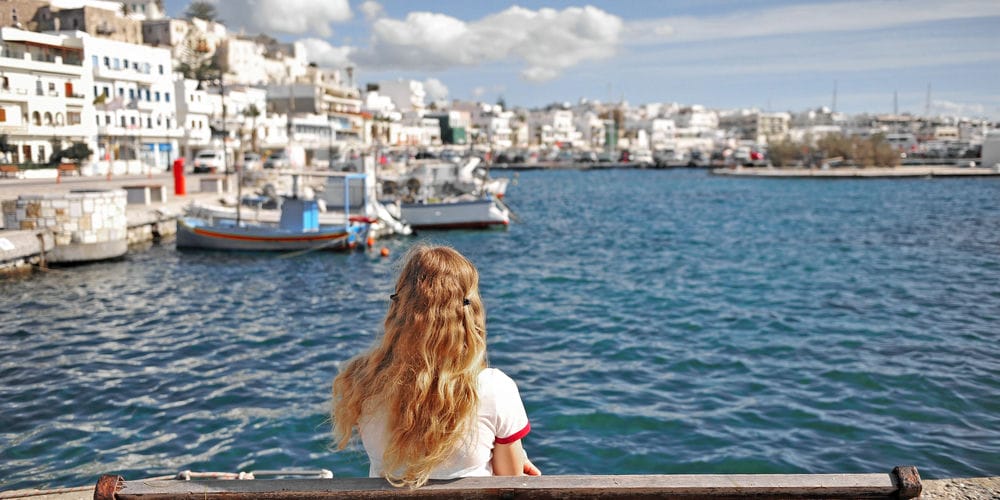
Greek Island Wildlife: Unique Sights When Traveling
Key Takeaways
- Greek island wildlife features rare animals like kri-kri goats and monk seals.
- National parks and reserves protect unique species and habitats.
- Responsible travel helps conserve the island's nature.
- Spring and autumn are best for wildlife watching.
Introduction: More Than Sun and Sea

When you picture the Greek islands, you might imagine iconic blue domes, whitewashed houses perched on sun-drenched cliffs, and endless stretches of turquoise sea.
But there’s another side to these islands. A wild, untamed side, where ancient landscapes shelter an astonishing diversity of fauna and flora.
Whether you’re a birdwatcher, a hiker, a snorkeler, or simply someone who loves the outdoors and wild animals, the islands offer unforgettable encounters with rare creatures, breathtaking scenery, and the deep-rooted traditions that tie people and nature together.
Wildlife enthusiasts, in particular, will be drawn to the Greek islands for their rich natural habitats and the opportunity to observe a remarkable variety of animals in their natural environments.
In this guide, you’ll find everything you need to know about the Greek islands’ wildlife, from what you can see and where, to how you can travel responsibly and make a positive impact.
The Greek Islands: A Naturalist’s Dream

A Landscape Shaped by Sea, Sun, and Time
Scattered across the Mediterranean, the Greek islands form a patchwork of unique habitats.
Some, like Crete and Lesvos, are mountainous and forested; others, like the Cyclades, are rocky and windswept, with dramatic cliffs plunging into the sea. These rocky areas provide important habitat for reptiles and other wildlife.
Fertile plains, hidden wetlands, and endless stretches of coastline add to the islands’ diversity. Across the region, a diverse array of ecosystems can be found, supporting a wide range of flora and fauna.
This variety of landscapes, combined with a mild Mediterranean climate - hot, dry summers and mild, wet winters - creates ideal conditions for wildlife (beyond wild cats) to thrive.
Each island has its own unique character and ecosystem, shaped by millennia of isolation, volcanic activity, and the gentle rhythms of the sea.
Biodiversity Hotspots
The Greek islands are home to an impressive range of animals and plants. Over 5,700 species of plants grow in Greece, many of them endemic, meaning they exist nowhere else on earth.
These islands support a large number of plant and animal species, making them true biodiversity hotspots.
The islands’ isolation has led to the evolution of unique species, with several species being endemic or specially adapted to the local environment, from the agile kri-kri goats of Crete to rare orchids and wildflowers. You can also find rare species among the islands' fauna, highlighting their ecological importance.
But it’s not just the plants that make these islands special. The Greek islands teem with mammals, birds, reptiles, amphibians, insects, and marine life.
Here, you can watch dolphins play in the surf, spot endangered animals like monk seals in quiet coves, and marvel at the spectacle of thousands of migratory birds stopping to rest on their journeys between continents.
Wildlife Highlights: What You Might See

Mammals: Goats, Seals, and More
While the Greek mainland is famous for its brown bears and wolves, the islands are home to their own cast of characters.
The best-known is the kri-kri goat, a wild goat species found only on Crete and a few nearby islets.
These nimble climbers are a symbol of the island’s wild spirit, often seen scaling rocky cliffs and grazing among ancient ruins.
Another island icon is the Mediterranean monk seal, one of the world’s rarest marine mammals.
Monk seals can sometimes be spotted resting on secluded beaches or swimming in crystal-clear waters, especially around the Alonissos Marine Park and the northern Aegean islands.
Other mammals you might encounter include:
- European rabbits hopping across meadows and fields
- Red foxes prowling the woods and scrublands
- Hedgehogs and martens rustling through gardens at dusk
- Feral cats and pigs adapting to life on the islands
In the surrounding seas, the common dolphin is a notable marine mammal found in Greek waters, valued for its ecological importance and cultural significance.
Though large predators like wolves and bears are absent from the islands, large mammals are also rare, with most land mammals being smaller species. These smaller mammals play an important role in the local ecosystem and add to the islands’ charm.
Birds: A Paradise for Birdwatchers
The Greek islands are a haven for birds, attracting both resident species and important bird species among migratory visitors. Over 400 bird species have been recorded, making the islands a top destination for birdwatchers.
What to Look For:
- Flamingos: During migration, flocks of flamingos gather in the wetlands of Lesvos, Rhodes, and other islands, creating a stunning pink spectacle against the blue skies.
- Eleonora’s falcon: This rare bird of prey breeds on rocky cliffs and small islets, feeding on insects and small birds. Seeing one is a highlight for any birder, as it is less commonly observed than many other birds in the region.
- Eurasian Scops Owl: Listen for its haunting call in olive groves and gardens on warm spring nights.
- Red-rumped swallow: With its distinctive reddish patch, this swallow is a common sight around cliffs and old buildings.
- Cinereous bunting: A rare songbird found on the eastern islands, especially in rocky, open hillsides.
Seabirds, such as gulls and cormorants, are a constant presence along the coast, while woodpeckers, warblers, and finches fill the forests and meadows with song.
Spring and autumn are peak times for birdwatching, as migratory species pass through the islands on their way between Europe and Africa. The islands serve as crucial stopover points where birds stop to rest and feed during their long journeys.
For those interested in exploring more birdwatching hotspots, Dadia Forest in northern Greece is also renowned for its raptors and diverse bird species.
Reptiles and Amphibians: Sun-lovers and Survivors
The warm, rocky landscapes of the Greek islands are perfect for reptiles. Lizards are especially common; look for the Balkan green lizard sunning itself on stones, or the starred agama climbing ancient walls.
Snakes are also present, with over 10 species recorded on some islands.
Most are harmless, but the Milos viper, found only on the island of Milos, is venomous and critically endangered. As with all wildlife, it’s best to observe from a safe distance.
Sea turtles are a highlight for many visitors. The loggerhead turtle nests on sandy beaches, coming ashore at night to lay eggs; a magical sight for those lucky enough to witness it.
In ponds and streams, you might spot European pond terrapins and frogs, especially after rain.
Marine Life: Underwater Wonders
Beneath the surface, the rich waters of the Greek islands are alive with color and movement. Snorkeling or diving in Greek waters, you might encounter:
- Dolphins leaping alongside boats
- Loggerhead turtles gliding through seagrass beds
- Octopuses hiding among rocks
- Sea urchins, starfish, and crabs in tide pools
The deeper waters surrounding the islands are home to diverse marine life, including sperm whales, fin whales, and even the occasional Cuvier’s beaked whale.
The Alonissos Marine Park is a particularly good spot for marine wildlife, with dolphin-watching tours and opportunities to learn about conservation.
Insects and Invertebrates: Small but Mighty
Insects play a crucial role both in mainland Greece and the islands’ ecosystems. Butterflies, like swallowtails and painted ladies, flutter through meadows in spring.
Bees and wasps pollinate flowers and crops, while ants, spiders, and snails are found in every natural habitat from Lake Kerkini in northern Greece to the most southern point of the country.
Along the coast, tide pools are alive with sea anemones, small crabs, and colorful sponges, perfect for curious explorers of all ages.
Flora: The Green Tapestry of the Islands

It’s not just the animals that make the Greek islands special; the plant life is equally remarkable.
Many plants have adapted to the islands’ dry, sunny climate, creating a unique Mediterranean landscape.
Olive groves are everywhere, their silvery leaves shimmering in the sun. These ancient trees provide not just olives and oil, but also shelter and food for countless birds and insects.
Vineyards thrive in the rocky soil, producing grapes for Greece’s famous wines. Fir, pine, and oak forests offer cool shade and habitat for small mammals and many birds, who choose them as their nesting sites.
In spring, the meadows explode with color as wild tulips, irises, and anemones bloom. Crete is especially famous for its wildflowers and herbs; over 130 species are found nowhere else on earth.
Bushy areas covered with thyme, sage, and oregano fill the air with fragrance and support native bees and butterflies.
The diversity of plants is a big part of what makes the islands so beautiful and biologically rich.
National Parks and Protected Areas: Where Nature Thrives

To protect this incredible biodiversity, many Greek islands have established national parks and protected areas.
These parks are vital for the survival of rare animals and plants, and they offer visitors a chance to experience wild Greece at its best.
Top Parks to Visit
- Samaria Gorge National Park (Crete): Hike through dramatic cliffs and pine forests, home to the kri-kri goat and dozens of bird species.
- Zakynthos Marine National Park: Visit the sandy beaches where loggerhead turtles nest, and snorkel in clear waters teeming with fish.
- Alonissos Marine Park: Take a boat tour to see monk seals, dolphins, and seabirds in one of Europe’s largest marine protected areas.
- Dadia Forest: A top destination for birdwatchers, Dadia Forest is renowned for its rich habitat supporting numerous raptors and diverse bird species. This protected area is especially significant for observing rare birds of prey in Greece.
Many other islands, like Lesvos and Naxos, have Natura 2000 sites, which are protected areas that safeguard habitats for wild birds and other species.
What to Expect:
- Marked hiking trails and guided tours
- Birdwatching hides and observation points
- Information centers with exhibits on local wildlife
- Opportunities for eco-friendly activities like kayaking, snorkeling, and photography
By visiting these parks, you support conservation efforts and help ensure that Greece’s natural treasures remain for future generations.
Threats and Conservation: Challenges Facing Island Wildlife

Despite their beauty, the Greek islands’ ecosystems are under pressure from human presence.
Humans have introduced new species, altered habitats, and influenced the behaviors of native wildlife. Development, tourism, and climate change all pose threats to wildlife.
Main Threats
- Habitat loss: Construction of roads, hotels, and other infrastructure reduces natural spaces.
- Wildfires: Frequent fires destroy forests and grasslands, threatening animals and plants.
- Pollution: Plastic waste, agricultural runoff, and untreated sewage harm marine and freshwater habitats.
- Illegal hunting and fishing: Poaching of rare birds, reptiles, and marine animals disrupts ecosystems.
- Climate change: Rising temperatures and changing rainfall patterns affect everything from wildflowers to migratory birds.
Conservation Efforts
Greece has made significant strides in protecting its wildlife. National parks, marine reserves, and the Natura 2000 network cover large areas of land and sea.
Many local organizations work to rescue injured animals, restore habitats, and educate the public about conservation.
As a traveler, you play a vital role. By choosing responsible tours, supporting local conservation projects, and following ethical wildlife-watching guidelines, you help protect the islands’ natural beauty.
Responsible Wildlife Watching and Eco-Tourism

Eco-tourism is growing on the Greek islands, offering travelers the chance to experience nature while making a positive impact.
Tips for Responsible Travel
- Stick to marked trails: Protect fragile plants and avoid disturbing animal homes.
- Keep your distance: Use binoculars or cameras to observe wildlife without causing stress.
- Don’t feed or touch animals: This can change their natural behavior and harm their health.
- Leave no trace: Take all litter with you and avoid picking flowers or collecting shells.
- Choose eco-friendly tours: Look for guides and operators who follow sustainable practices and support local conservation.
Popular Eco-Tourism Activities
- Guided wildlife hikes: Learn about native species and habitats from local experts.
- Birdwatching tours: Spot rare and migratory birds with experienced guides.
- Eco-diving and snorkeling: Explore underwater ecosystems while supporting marine conservation.
- Kayaking and boat trips: Visit remote coves and marine parks with minimal environmental impact.
Supporting local communities by buying crafts, tasting island produce, or booking accommodations run by residents also helps preserve traditional ways of life and encourages nature-friendly tourism.
Wildlife in Greek Mythology and Culture

The connection between the Greek islands and their wildlife runs deep. Animals have always played a central role in Greek mythology, art, and tradition.
- Dolphins: Seen as helpers of the gods, dolphins symbolized guidance and good luck. Ancient Greeks believed that seeing a dolphin was a sign of a safe voyage.
- Deer: Sacred to Artemis, the goddess of the hunt, deer represent purity and the wild spirit of the islands.
- Goats and donkeys: Essential to island life, these animals appear in countless folk tales and festivals.
- Birds: From the wise owl of Athena to the migratory swallows that signal the arrival of spring, birds are woven into the fabric of Greek culture.
Even today, festivals, songs, and local art celebrate the islands’ animals. By learning about these traditions, travelers can deepen their appreciation for the close bond between people and nature in Greece.
Planning Your Wildlife Adventure: Practical Tips
When to Visit
- Spring (April–June): Wildflowers bloom, migratory birds arrive, and the weather is mild, which is ideal for hiking and wildlife watching.
- Autumn (September–November): Birds migrate south, sea temperatures are warm, and crowds are thinner.
- Summer (July–August): Hot and dry, with excellent snorkeling and marine wildlife opportunities, but some animals may be less active during the heat of the day.
- Winter (December–March): Quiet, with fewer tourists and a chance to see different bird species and enjoy peaceful landscapes.
What to Pack
- Binoculars and a camera for wildlife spotting
- Lightweight, breathable clothing and sturdy walking shoes
- A hat, sunscreen, and plenty of water for hot days
- Field guides or apps for identifying birds, plants, and animals
- A reusable bag or container for snacks; reduce plastic waste!
Where to Go
- Crete: For kri-kri goats, wildflowers, and Samaria Gorge
- Lesvos: For incredible birdwatching, wetlands, and a vibrant springtime wildflower display
- Zakynthos: For loggerhead turtle nesting beaches and the Zakynthos Marine National Park
- Alonissos: For dolphin and monk seal sightings in the Alonissos Marine Park
- Naxos and the Cyclades: For hikes through ancient olive groves, wild goats, and unique reptiles
- Milos: For rare reptiles like the Milos viper and dramatic volcanic landscapes
Each island in the Ionian or the Aegean Sea offers its own blend of habitats and wildlife, so consider combining a few destinations for a fuller experience.
Unique Wildlife Experiences for Travelers
1. Witnessing Loggerhead Turtles Nest
One of the most moving wildlife experiences in Greece is watching loggerhead turtles (Caretta caretta) come ashore to lay their eggs.
Zakynthos is the most famous spot, but you can also see nesting activity on islands such as Kefalonia and Crete.
Guided night tours are available during nesting season (June to August), allowing visitors to observe this remarkable ritual without disturbing the turtles.
These tours are led by conservation experts and follow strict guidelines to ensure the turtles’ safety.
2. Exploring Marine Life by Snorkel or Dive
The Greek islands are a paradise for snorkelers and divers. Crystal-clear waters reveal a world filled with colorful fish, octopuses, starfish, and sometimes even dolphins or monk seals.
Seagrass meadows and rocky reefs are easily accessible from many beaches.
Eco-friendly dive centers offer courses and guided trips, often supporting marine conservation through research and beach cleanups.
3. Birdwatching in Wetlands and Forests
If you’re a wildlife enthusiast, and specifically a bird one, spring and autumn migrations are the best times to visit.
Lesvos, in particular, is an international hotspot, with birdwatchers flocking from around the world to see flamingos, herons, raptors, and rare songbirds.
Many islands have designated birdwatching areas, hides, and local guides who can help you spot and identify even the rarest species.
4. Hiking in National Parks
The Greek islands are crisscrossed with ancient footpaths and modern hiking trails, many of which pass through protected areas.
Samaria Gorge in Crete is a must for nature lovers, offering a chance to see endemic plants, wild goats, and dramatic scenery.
Trails are well-marked, and guided hikes are available for those seeking expert insight into the islands’ natural history.
5. Joining Conservation Projects
For travelers who want to give back, several organizations offer opportunities to volunteer with wildlife and habitat conservation.
This might include helping with turtle monitoring, participating in beach cleanups, or assisting with research on birds or marine and land mammals.
These experiences offer a deeper connection to the islands and a chance to make a real difference.
Responsible Travel: Making a Positive Impact

Travelers have a unique opportunity (and responsibility) to help protect the many species of the Greek islands’ natural beauty. Here are some ways you can make your trip more sustainable:
- Choose eco-friendly accommodations: Look for hotels and guesthouses that use renewable energy, reduce waste, and support local conservation.
- Support local businesses: Eat at family-run tavernas, buy crafts from island artisans, and book tours with local guides.
- Reduce plastic use: Bring a reusable water bottle, shopping bag, and containers for snacks.
- Respect wildlife and habitats: Never remove animals, shells, or plants from their natural environment.
- Educate yourself and others: Learn about the islands’ wildlife before you go, and share your knowledge with fellow travelers.
Your choices matter. By traveling thoughtfully, you help ensure that the islands remain a haven for wildlife and a source of wonder for future generations.
Wildlife and Culture: The Heartbeat of the Islands
On the Greek islands, nature and culture are inseparable. The landscape has shaped the way people live, from the terraced olive groves and vineyards to the songs and festivals inspired by local animals.
Traditional foods, like honey, cheese, and herbs, are products of the same ecosystems that support wild bees, goats, and aromatic plants.
Festivals often celebrate the natural world, whether it’s the arrival of migratory birds, the olive harvest, or the nesting of turtles.
By participating in these traditions, you become part of a living story that stretches back thousands of years.
Final Thoughts

The Greek islands are so much more than their postcard-perfect beaches. They are living landscapes, shaped by wind, sea, and time, home to rare animals, ancient forests, and a culture that honors the wild.
We believe that every traveler can help protect this legacy. Whether you’re hiking a mountain path, snorkeling in a national marine park, or tasting honey from a village beekeeper, your choices make a difference.
Let us help you design a journey that’s as unique as the islands themselves. Our team will craft an itinerary tailored to your interests, connecting you with expert guides, eco-friendly accommodations, and unforgettable wildlife experiences.
Contact us today to start planning your Greek island adventure and discover the wild heart of Greece for yourself!
Quick Reference: Greek Island Wildlife at a Glance
|
Animal |
Where to See |
Best Season |
Conservation Status |
|---|---|---|---|
|
Loggerhead Turtle |
Zakynthos, Crete |
June–August |
Vulnerable |
|
Monk Seal |
Alonissos, Sporades |
Year-round |
Endangered species |
|
Kri-kri Goat |
Crete |
Year-round |
Rare |
|
Flamingo |
Lesvos, Rhodes |
Spring, Autumn |
Migratory |
|
Eleonora’s Falcon |
Cliffs, small islets |
Spring–Summer |
Protected |
|
Balkan Green Lizard |
Most islands |
Spring–Summer |
Common |
|
Dolphins |
Aegean, Ionian seas |
Year-round |
Common |
|
Painted Lady Butterfly |
Meadows, gardens |
Spring–Summer |
Common |
|
Wildflowers |
Crete, all islands |
March–May |
Endemic species |





